
The Pinwheel Galaxy is a face-on spiral galaxy 21 million light-years away from Earth in the constellation Ursa Major. It was discovered by Pierre Méchain in 1781 and was communicated that year to Charles Messier, who verified its position for inclusion in the Messier Catalogue as one of its final entries.

Messier 107 or M107, also known as NGC 6171, is a very loose globular cluster in a very mildly southern part of the sky close to the equator in Ophiuchus, and is the last such object in the Messier Catalogue.

Omega Centauri is a globular cluster in the constellation of Centaurus that was first identified as a non-stellar object by Edmond Halley in 1677. Located at a distance of 17,090 light-years, it is the largest-known globular cluster in the Milky Way at a diameter of roughly 150 light-years. It is estimated to contain approximately 10 million stars, and a total mass equivalent to 4 million solar masses, making it the most massive-known globular cluster in the Milky Way.
Messier 102 is a galaxy listed in the Messier Catalogue that cannot be unambiguously identified. Its original discoverer Pierre Méchain retracted his discovery two years after publication and said that it was a duplicate observation of Messier 101. Later historical evidence favors that M102 is actually the galaxy NGC 5866, although other galaxies have been suggested as possible identities. The National Aeronautics and Space Administration (NASA) considers it to be the same as NGC 5866.
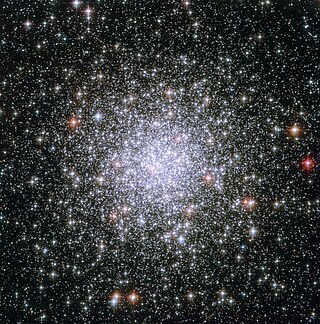
Messier 69 or M69, also known NGC 6637, is a globular cluster in the southern constellation of Sagittarius. It can be found 2.5° to the northeast of the star Epsilon Sagittarii and is dimly visible in 50 mm aperture binoculars. The cluster was discovered by Charles Messier on August 31, 1780, the same night he discovered M70. At the time, he was searching for an object described by Nicolas-Louis de Lacaille in 1751–2 and thought he had rediscovered it, but it is unclear if Lacaille actually described M69.

Messier 70 or M70, also known as NGC 6681, is a globular cluster of stars to be found in the south of Sagittarius. It was discovered by Charles Messier in 1780. The famous comet Hale–Bopp was discovered near this cluster in 1995.

Messier 75 or M75, also known as NGC 6864, is a giant globular cluster of stars in the southern constellation Sagittarius. It was discovered by Pierre Méchain in 1780 and included in Charles Messier's catalog of comet-like objects that same year.
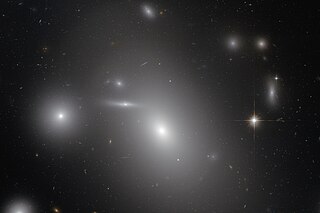
NGC 4889 is an E4 supergiant elliptical galaxy. It was discovered in 1785 by the British astronomer Frederick William Herschel I, who catalogued it as a bright, nebulous patch. The brightest galaxy within the northern Coma Cluster, it is located at a median distance of 94 million parsecs from Earth. At the core of the galaxy is a supermassive black hole that heats the intracluster medium through the action of friction from infalling gases and dust. The gamma ray bursts from the galaxy extend out to several million light years of the cluster.

NGC 7822 is a young star forming complex in the constellation of Cepheus. The complex encompasses the emission region designated Sharpless 171, and the young cluster of stars named Berkeley 59. The complex is believed to be some 800–1000 pc distant, with the younger components aged no more than a few million years. The complex also includes one of the hottest stars discovered within 1 kpc of the Sun, namely BD+66 1673, which is an eclipsing binary system consisting of an O5V that exhibits a surface temperature of nearly 45,000 K and a luminosity about 100,000 times that of the Sun. The star is one of the primary sources illuminating the nebula and shaping the complex's famed pillars of creation-type formations, the elephant trunks.

NGC 6293 is a globular cluster located in the constellation Ophiuchus. Its Shapley–Sawyer Concentration Class is IV. It was discovered by the American astronomer Lewis A. Swift on 8 July 1885. Like many other globular clusters, its distance is not well known; it may be anywhere from 31000 to 52000 light-years away from Earth.
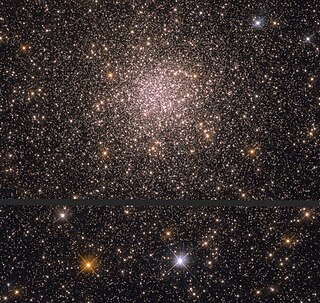
NGC 6316 is a globular cluster located in the constellation Ophiuchus. Its Shapley-Sawyer Concentration Class is III, meaning that it has a "strong inner core of stars" and was discovered by the German-born British astronomer William Herschel on 24 May 1784. It is at a distance of about 37,000 light years away from the Earth. NGC 6316 has a metallicity of -0.45; this means that its ratio of hydrogen/helium to other elements is only 35% that of the Sun, but still enough to be considered a "metal-rich" globular cluster.

NGC 6325 is a globular cluster located in the constellation Ophiuchus. Its Shapley-Sawyer Concentration Class is IV, meaning that it has "intermediate rich concentration"; it was discovered by the British astronomer John Herschel on 24 May 1835. It is at a distance of about 25,000 light years away from Earth.
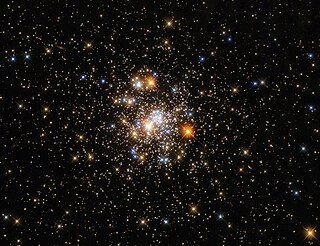
NGC 6717 is a globular cluster in the constellation Sagittarius, and is a member of the Palomar Globular Clusters group. Palomar 9 was discovered by William Herschel on August 7, 1784. It is located about 7,300 parsecs away from Earth.

NGC 3921 is an interacting galaxy in the northern constellation of Ursa Major. Estimates using redshift put it at about 59 million light years from Earth. It was discovered on 14 April 1789 by William Herschel, and was described as "pretty faint, small, round" by John Louis Emil Dreyer, the compiler of the New General Catalogue.

IC 2395 is an open cluster in the constellation Vela.
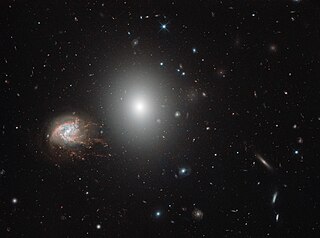
NGC 4860 is an elliptical galaxy in the constellation Coma Berenices. The galaxy was discovered on 21 April 1865 by Heinrich Louis d'Arrest.

NGC 4503 is a barred lenticular galaxy located around 41 to 74 million light-years away in the constellation Virgo. NGC 4503 was discovered by astronomer William Herschel on March 15, 1784. NGC 4503 is a member of the Virgo Cluster.

NGC 6453 is a globular cluster approximately 37,000 light-years away from Earth in the constellation of Scorpius.

NGC 3402, also known as NGC 3411, is an elliptical galaxy in the constellation Hydra. The object was discovered on March 25, 1786 by German-British astronomer William Herschel. NGC 3402 is the largest galaxy in the eponymous NGC 3402 cluster.
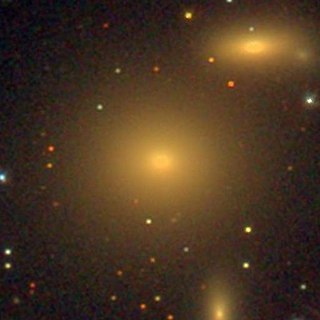
NGC 1278 is an elliptical galaxy located about 230 million light-years away in the constellation Perseus. NGC 1278 was discovered by astronomer Heinrich d'Arrest on February 14, 1863. It was then rediscovered by astronomer Guillaume Bigourdan on October 22, 1884 and was later listed as IC 1907. NGC 1278 is a member of the Perseus Cluster and is a low-luminosity AGN (LLAGN).




















